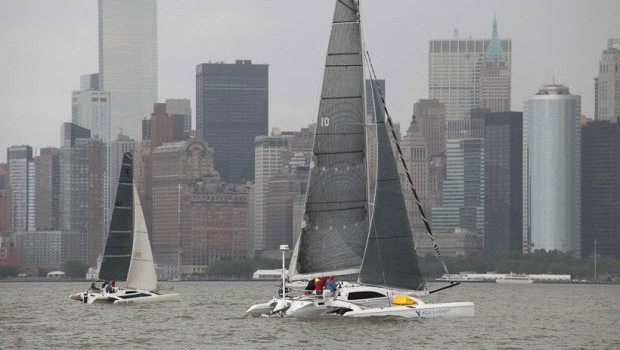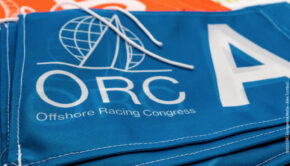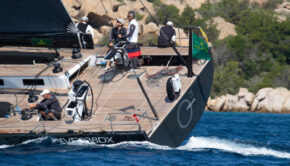Leveling the Field with Skill Handicapping
Published on February 18th, 2016
Rating systems seek to equalize competition among dissimilar boats by taking the boat’s characteristics and performance enhancing parameters out of the equation, leaving the only variables to be the crew’s skill and their race preparation. But as Don Watson reports, racing can be further equalized when accounting for sailor skill too…
The New England Multihull Association (NEMA) has been using skipper handicaps for 50 years. Since multihulls have generally been a small group of sailors with wildly varying skills and boatspeeds, this approach has worked well to encourage participation.
The system does not intend to give credit for bad preparation, but does intend to level varying skill levels, not with podium finishes, but at least not with continuous last places for newer racers.
Below is the rating system I wrote 21 years ago for NEMA with the goal being to minimize the spread of corrected times. While this rule would probably not stand up to the pressure of really deep pocketed racers, it has served NEMA very well over many years.
1.0 DEFINITION
1.1 NEMA ratings are performance handicaps. They are based on the performance of the boat, determined as far as possible on the observations of previous racing experience. Handicaps are adjusted as needed on the basis of the boat’s performance so that each well-sailed boat has an equal opportunity to win.
1.2 NEMA ratings are unique in that they handicap the skipper as well as the boat. The intent is that all skippers crossing the starting line have a good chance of winning if they sail to the best of their ability. This feature of the rule aims to encourage participation. It does not intend to reward poor performance or unnecessarily penalize proficiency.
2.0 DESIGN
2.1 The NEMA rating rule is open to any sailing multihull of good design and construction. It is an open rule and no other restrictions apply except as detailed in the NEMA Race Rules.
2.2 Existing boats will not be made obsolete by newer designs under the NEMA system. It does not use formulas to determine handicaps, because any formula can be beaten by a clever designer. As designs improve, or the ability of the skipper improves, they are handicapped accordingly. Two of the major attractions of the rating rule are that older designs can race successfully alongside newer designs, and skippers of unequal ability or resources can compete on an even basis.
2.3 NEMA discourages rule beating. If a skipper modifies his boat, the rule will attempt to compensate for the new speed potential. The use of taller masts, bigger floats, gutted interiors, or other attempts to increase speed will result in rating adjustments.
3.0 EQUIPMENT
3.1 NEMA assumes that a boat is reasonably prepared to race. It does not expect to give undue credit for chronically dirty bottoms, overly loaded hulls or malfunctioning navigation equipment. It does recognize, however, that not every sailor can purchase new sails every year or possess the latest in high tech gadgetry.
3.2 All contestants are to comply with ORC Category IV safety requirements and those applied by local race committee.
4.0 HANDICAP PROCEDURE
4.1 Handicap ratings are expressed in seconds per nautical mile.
4.2 Each boat in the fleet will be assessed a rating based on observed on the water performance. Each rating will be approved by a majority of the Race Committee. The Race Committee will use comparative data derived from race results to determine handicap.
4.3 This comparative data will generally take two forms. First, a race analysis sheet will be prepared which will look at the actual seconds/mile difference between any pair of boats in the race.
4.4 In addition, rating maps will be prepared which will chart sailed handicap versus scored handicap. To find sailed handicap, a reference boat will be chosen. The reference boat will be that boat whose corrected fleet placing is equal to the number of finishers x .4. Sailed handicaps will be tabulated relative to that boat. For example, say the reference boat has a rating of 100. If a boat finishes 15 seconds/mile behind it, then it will have sailed to a rating of 115. If that boat’s handicap is 120, then the boat will have sailed faster than its rating. A graph can to visually display the boat’s performance relative to its rating, and this graph will be useful in determining what a boat’s rating should be.
4.5 The .4 boat is used because it is likely to be a well sailed boat, which did not receive any abnormal breaks on the water that day. The first place boat sailed better than its rating, and therefore won the race. A boat near the bottom of the fleet probably did not sail to its rating and is probably a poor relative indicator.
4.6 While the above numbers will be valuable tools, the Race Committee will also use its experience to weigh their value. If a boat’s performance data is skewed due to a large wind shift, the wind dying at the end of the race, failure to start on time, unreasonable ineptitude or any other aberration, the Committee must make note of it.
4.7 While the rule will handicap skippers, it will not reward incompetence or penalize those who sail to the best of their ability.
4.8 A new boat of unknown potential will be given a rating based on submitted data compared to that of known performers. The intent of the race Committee will be to favor the fleet when issuing new ratings to new boats and skippers.
4.9 One design boats may not rate equally due to differences in skipper ability. One design boats which are new to the fleet will initially rate at least as fast as the fastest rated boat of its type. There shall not be more than a twenty second differential between one-design boats.
5.0 REVIEW
5.1 Although all ratings are subject to review at any time, generally, the Race Committee will review ratings prior to each season and after the Buzzards Bay Regatta. Any skipper may appeal his own or others rating at any time. Such appeal must be made in writing to the race committee.
Don Watson, NEMA RC Chairman, Rev. 1995









 We’ll keep your information safe.
We’ll keep your information safe.